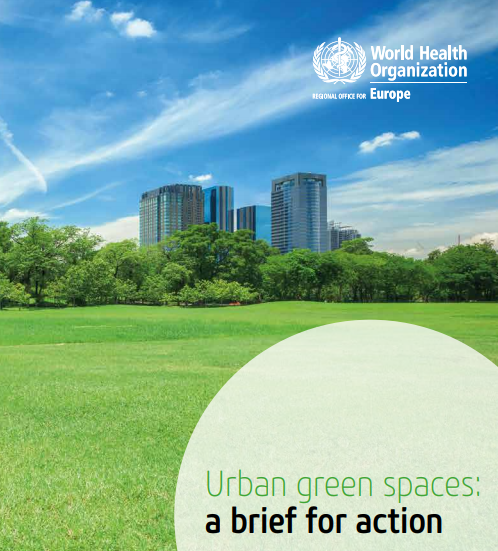Urban green spaces: a brief for action (2017) – World Health Organization Publication

Download: Urban-Green-Spaces-EN (PDF, 1.4 MB)
Urbanization results in an increasing proportion of the population living in cities. In Europe it is expected that around three quarters of the population will live in urban settings by 2020. Urban living limits access to nature and can increase exposure to certain environmental hazards, such as air and noise pollution. Many urban areas face increasing pressure from expanding populations, limited resources and growing impacts of climate change. These challenges must be addressed in order for cities to provide healthy and sustainable living environments.
Green spaces and other nature-based solutions offer innovative approaches to increase the quality of urban settings, enhance local resilience and promote sustainable lifestyles, improving both the health and the well-being of urban residents. Parks, playgrounds or vegetation in public and private places are a central component of these approaches and can help to ensure that:
- urban residents have adequate opportunities for exposure to nature;
- urban biodiversity is maintained and protected;
- environmental hazards such as air pollution or noise are reduced;
- the impacts of extreme weather events (heatwaves, extreme rainfall or flooding) are mitigated);
- the quality of urban living is enhanced;
- the health and well-being of residents is improved.
Urban green spaces: a brief for action (2017) is an original World Health Organization (WHO) publication. Original version can be found on the following link, as well other language versions: http://www.euro.who.int/en/hea
Portuguese version available on the following link: http://arquitectura.ufp.pt/publicacoes/.



